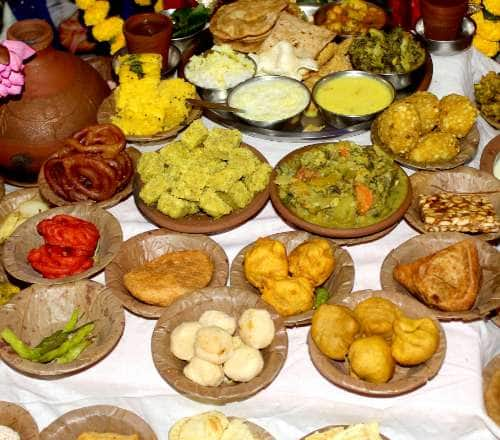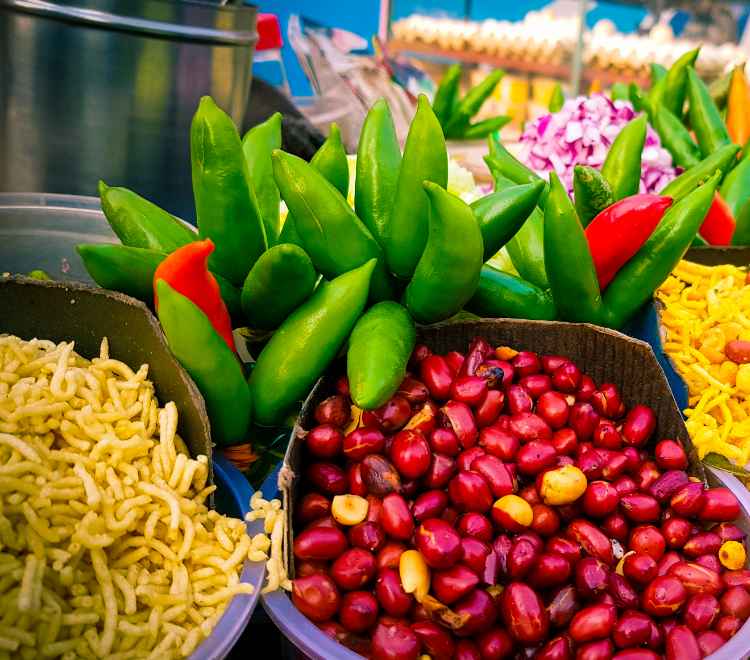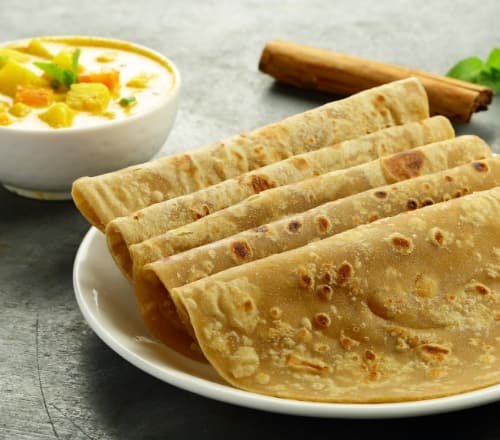Stay logged in to proceed with bookings, orders and offers.
On changing the terminal, you will loose items in your cart. Are you sure you want to change your terminal?
Age-old Karnataka recipes that will bring comfort to your tummy and soul.
Some time ago, when I met my neighbour, Ritesh, who hails from Karnataka, we discovered—to our joy—our shared passion for cooking. We soon embarked on a culinary adventure, eager to prepare and savour some of Karnataka's most beloved regional food. Ritesh's treasured possession, his beloved grandmother's diary, unveiled a treasure trove of authentic Karnataka recipes—each one a precious heirloom passed down through generations. Brimming with an array of aromatic herbs and spices, these regional delicacies are a testament to the wisdom and traditions of our ancestors. As we embarked on our cooking journey, we found these dishes to be not only rich in flavour but also remarkably light on the stomach. Preparing them was a joy, and indulging in their deliciousness was a guilt-free pleasure. These recipes truly offered a fulfilling experience, combining the joy of cooking with the taste of tradition.
It is a simple recipe made from a unique blend of unripe mangoes, fresh coconuts, and red chillies, commonly found in south India. Ritesh and I were particularly captivated by the alluring fragrance of asafoetida, a crucial addition of the preparation. To begin, we washed the rice and set it to pressure-cook. As it cooked, Ritesh combined small pieces of raw mango, two to three chillies, a half-grated coconut, sesame seeds, peanuts, and grated jaggery in the blender. He emphasised on the importance of finely grinding these ingredients to create a melt-in-the-mouth experience. Taking note of these meticulous details, I appreciated how such nuances bring forth the authentic and flavourful essence of the dish we were preparing. Next, we heated oil in a pan and added peanuts, mustard seeds, dried chillies, and curry leaves, and waited for the ingredients to crackle. Ritesh asked me to stir the mixture gently before adding asafoetida and turmeric powder, infusing the blend with a burst of flavour and colour as I continued stirring. Ritesh instinctively knew when it was time to add the finely grounded mango-coconut paste, and as he was busy stirring, I inhaled the aromatic fragrance of the mixture. Ritesh’s wife, Meghna, joined the party; she wanted to take part in the cooking too. He asked her to pour the mixture over the cooked rice. She was kind enough to show me how this regional food of Karnataka is served with coriander leaves and roasted peanuts, and eaten with papad or salad. We celebrated with several mouthfuls of the delicious mango rice!
While dining at a local Bengaluru restaurant, I spotted a couple relishing a white, crepe-like dosa. Intrigued, I requested the same dish and was amazed by how soft and delicate its texture was. I knew I had to ask Ritesh for the recipe! As soon as I mentioned Neer Dosa, Ritesh's eyes lit up with excitement. A personal favourite of his, he had the recipe in his grandmother’s diary. Ritesh, with his usual confident tone, explained that the key to making the perfect Neer Dosa was getting the ratio of the water correct as this could make or break the recipe. He suggested that for one cup of rice, two and ½ cups of water was a good start. He began by soaking the rice for about five to six hours. Then, he blended it before adding salt and some more water to the mixture. “The final mixture should resemble buttermilk,” Ritesh shared. Next, he added oil to a heated pan and spread the batter all over it. “If you are worried about the shape, that’s natural, but don't try hard. Let it be, it will take an agreeable shape eventually,” came another invaluable piece of advice from the master chef! I wrote it all down in my recipe journal, thanking him for his contribution to my new hobby—exploring Karnataka's regional food through heirloom recipes. We covered the pan for two minutes, so that the batter could cook, before serving it with a tangy sauce.
It was a rainy Saturday morning and I wanted pakoras for breakfast. I was preparing the batter for it when Ritesh called and asked me to come over to his place. To my delight, I arrived at his place to witness Meghna getting ready to prepare Medu Vada. I couldn't wait to find out more about this regional food item that is a favourite across India! Once again, the recipe came from Ritesh's grandmother’s well preserved recipe book. I grabbed my recipe journal and sprinted towards Meghna, who was awaiting my arrival to begin preparations. Dressed in a traditional south Indian saree and a bindi between her brows, Meghna smiled at me. She was proud of her culture and appreciated my interest in learning recipes from her. To prepare the mixture for the vadas, Meghna soaked urad dal for four hours before adding a spoonful of salt and blending it well. As she poured the mixture into the blender, she said, “Keep sprinkling water and scraping the blender walls till it’s clean. Next, make sure that the blender does not get overheated as it could turn the taste of the mixture bitter.” I took notes as usual.
“The batter should be white, thick, and frothy. It is a sign that you did a good job, and the rest of the recipe is smooth sailing,” she added, exhibiting years of experience as an expert cook. Next, we added a pinch of baking soda, and two to three green chillies, along with turmeric, crushed pepper, curry leaves, onion, and coconut to the mixture. We, then, moulded the mixture into small balls and deep-fried them. Once the vadas took a deep golden colour, I transferred them to a plate and served the dish with coconut chutney. I have been delighted each time I have had these dishes. For those who wish to try new dishes, I would nudge them to start here. Who knows, you may develop an excellent taste for these unique delicacies!





The Adani One expressly disclaims all liability, direct and indirect, in respect to actions taken or not taken based on any or all the contents of this Blog. The Blog is an opinion of the contributor based on the collation of data from various sources and is provided only for information purpose. Adani One does not canvass, advertise, solicit, invite or induct for any product, merchandise, information, brand or any other materials mentioned in the Blog, nor does it obtain any monetary benefit from the same. Reader is advised to read and apply his/her intellect and discretion in this regard. Any Intellectual Property mentioned in this blog belongs to the rightful owner. We do not intent to claim any interest over the same.